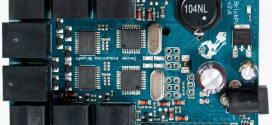For the Lego World 2009 in the Netherlands I built an omniwheeled robot. It’s been done thousands of times before and the Internet is full of great (and not so great) examples. I wondered why I hadn’t jumped on that bandwagon so I got cracking.
This was the first prototype I made back in August. I was on a Lego expo together with Martijn and Daniel (and their respective better halves). I wanted to see if it were possible to build an omniwheeled robot using just the NXT 2.0 kit pieces. This is what I came up with.
 It didn’t perform well at all, especially when it needed to do anything but spin around. It got me thinking, though, how could I build an omniwheeled robot that would perform well. Lucky for me, Martijn was more than happy to donate a couple of wheels to the cause. It was a little more than a couple, I guess he was expecting me to build a 6 wheeled robot or something. It came to about 200 wheels in all, 86 small ones and about 115 bigger ones.
It didn’t perform well at all, especially when it needed to do anything but spin around. It got me thinking, though, how could I build an omniwheeled robot that would perform well. Lucky for me, Martijn was more than happy to donate a couple of wheels to the cause. It was a little more than a couple, I guess he was expecting me to build a 6 wheeled robot or something. It came to about 200 wheels in all, 86 small ones and about 115 bigger ones.
I went through quite a number of wheel designs over the next couple of weeks. Some were ridiculous cart wheels shaped monstrosities that measured more than 20cms in diameter. Others simply defied explanation. The design I eventually settled on is shown below. It is loosely based on the omniwheel design that Steve Hassenplug made with some of my own modifications.
The wheel is actually made up of two wheels next to each other. They’re quite resilient. During Lego World I demoed the robot quite a bit and only 2 of the small wheels fell off during that whole time (5 days). Not bad.
Before I got my current design, the actual robot went through a number of prototypes over the course of about 2 months or so. I took pictures of some of them.
The first one is quite simple but it had quite a bit of flex in the axles attaching the wheels to the motors, so the outer wheels never actually touched the ground. The one in the middle had one half of the wheel on each side of a frame holding the motor. This one actually had suspended arms holding the frame housing the motors. It looked super cool but the whole thing flexed like crazy when you took a turn, it was terrible. The 3rd model was one I build during our camping trip. It was much improved, less flexing but I wasn’t happy with how little contact the outer wheels made with the ground. This caused a huge amount of bouncing around. I think in all there were about 10 prototypes. The final and current incarnation of the I present to you below.
The first picture was taken before Lego World, the other two were taken after. A couple of nice bumpers were added, a HiTechnic Touch MUX, a HiTechnic Compass and finally a HiTechnic IR Receiver to make the whole thing remote controlled. Here’s a little video I put together of it in action.
So there you have it. I’ll post some pictures of my remote controlled crane truck later this week.
 Bot Bench I'd Rather Be Building Robots
Bot Bench I'd Rather Be Building Robots
















That looks amazingly fun to play with 🙂 I wish I could do something like that 🙂 Too bad I dont have enough wheels 🙁 Your robots (when you make them) are pretty darn nice!
OMG, I love these sort of wheels, I wish we had them on our cars – would make parking ALOT easier! lol
Seriously though this a great project – well done! Thanks for showing us some of the evolution too, was an interesting read.
I do have one minor criticism/question though, not to take anything away from what you’ve done but it’s not really omni-directional is it? It really just drives forwards, backwards and can turn on the spot right? Don’t get me wrong, this is still really impressive how you’ve done it! 🙂 But do you think it would be possible to make a version where the individual wheels actually turn from motors too?
Here’s an example of what I mean: http://www.youtube.com/watch?v=CjcyHicm3NA
I think this would truely allow it to move in any direction, but would be a big jump in difficulty and may not even be possible to do in lego(?). At the very least I’d imagine you’d need 3 extra motors.
I’d love to hear how plausible this design might be and how you’d go about it, what the technical difficulties would be, etc. Once again, great job.
The Meccanum wheels are very nice. A friend of mine made a vehicle that uses them. It’s all Lego, but the forces on the wheels cause the wheels to quickly wrench themselves apart. You would only need as many motors as you have meccanum wheels. My wheels require intermittent maintenance on them, too. There is quite a bit of sideways force on them which causes the little wheels to be move on their individual axles.
As for movement, a robot with omniwheels like mine can also move in any direction it likes, depending on the speed of the individual motors. You do need a different wheel configuration, though, basically one on each corner or side of your platform. This configuration makes it less suitable for real world applications like the forklift truck in the video above. The meccanum wheel is much more suitable for this kind of thing.
[…] been working on various models of omniwheeled robots for a while now, refining the design with each step. Last week I had rebuilt it completely, […]
[…] been working on various models of omniwheeled robots for a while now, refining the design with each step. Last week I had rebuilt it completely, […]
[…] Source: My Omnipotent Omniwheel […]
[…] as much as the next AFoL. I chose this photo because it shows off the omniwheel cluster design. Click through to Xander’s blog to see the final version of his Kiwi drive […]
[…] Omni-Directional LEGO Wheels by Xander at Bot Bench These wheels use the LEGO pulley to get a six-fold symmetry. Each “wheel” uses 12 LEGO wheels. For archiving purposes, here are three pictures. Please visit Xander at Bot Bench for larger images and more details. Omni-Directional LEGO Wheels by Xander Soldaat at Bot Bench Details of Omni-Directional LEGO Wheels by Xander Soldaat at Bot Bench Details of Omni-Directional LEGO Wheels by Xander Soldaat at Bot Bench […]
Instead of increasing the number of wheels,thereby increasing the complexity isn’t a good idea in engineering.Even a single motor with horizontal flexibility in
180 degree rotation could make the machine travel in all possible direction.the coordination of motor could make easier this way.
How about you make a model to show us what you mean? 🙂 I’m very curious how much less complex it would turn out to be.
This is awesome! Yeah about 4 years ago when i was 12 i made one of these, but it was much more like your original prototype with the motors at an angle and just using the hubs. It didnt have very much mobility but it was cool. Lately i’ve been picking up my lego more and i want to make a holonomic robot again. Your design is awesome, hope you don’t mind if i steal a few ideas 😛
If I minded, I wouldn’t write about them on a public blog 🙂
Could you share with me the code you used to program this, if you used robotc or nxtg? I am using a similar design for our bot, and I am running into some issues with programming. Thanks!
I almost always use ROBOTC. If you need an example of some code for controlling the motors, check out mindsensors-ps2ctrl-v4-test1.c in my Driver Suite.